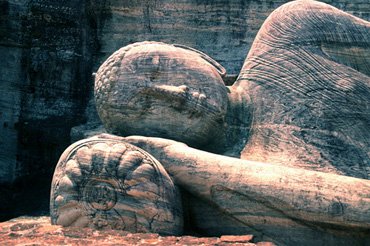Comparison Makes a Difference: Reflections on Teaching Comparative Religion in the Liberal Arts

My early experiences at Berkeley with undergraduates focused my concerns not only on specialized scholarly research, but also on what I began to see as the crucial role of the comparative study of religion in the context of the liberal arts. What before were merely theoretical reflections on the challenges of comparison and of cultural relativism in the "human sciences" became stubbornly concrete when I became aware of the practical task of designing and teaching courses that accurately reflected both cultural and religious diversities and what I saw and experienced as common patterns in human religiousness. As for comparison, it remains always a matter of what, like Ricoeur's symbol, best "gives rise to thought." The best use of comparative themes -- love, death, evil, pilgrimage, the body -- does not naively presuppose universal experiences or univocal typologies across cultures or religions, but generates sometimes surprising new questions, incongruities, juxtapositions that, on occasion, in a seminar or classroom conversation, generate fresh insights, and sometimes, strange and unexpected congruities. Both differences and similarities are critical in comparative studies, and the cross-cultural study of religion is potentially suited to be a powerful witness to both realities.
My ambition is to have students come away from my courses with a vivid sense of cultural difference and incongruity -- a healthy relativity -- matched with just as vivid a sense of the "we," a growing sense of existential connection, even identification, with other human beings in different parts of the world. For most undergraduates in an American college or university, it will be in our introductory courses in "World Religions" that they will be for the first time compelled to respond both intellectually and personally to the existence of radically different worlds of discourse and human behavior. They will be challenged to somehow hold it all together in their minds and at the same time begin to make informed ethical assessments, of themselves perhaps more than of the others whom they study.
My approach to teaching comparative religion is based not on a set of answers, but on a series of questions. How does one find a way of understanding, with critical sympathy, another's experience? (The problematic but inevitable nature of such a task is always at the back of my mind) How do we both respect difference, even spectrums of incommensurability, and not relinquish a notion of social and ideological patterns, even a sense of something common to the "human?" How do we manage a genuine turn to multiculturalism in our curriculum without falling prey to what Theodor Adorno has called "bourgeois relativism," where anything is ultimately equal to anything else and critical, moral, and political judgment is paralyzed. This question of balance is one of the most critical and most vexing of our comparative enterprise. And moreover, I belief that the study of diverse religious traditions offers both scholar and student vivid access to these important questions.
I attempt to better address these issues in my teaching by dealing not only with theories, religious ideas, or heuristic typologies, but also practice. I emphasize, within the context of India, not only the doctrines that set Hindus, Buddhists, Jains, Christians, and Muslims apart from one another as bounded, reified entities, but some common patterns of worship and piety that unite them, that blur the boundaries. We spend as much time, for instance, on relic and tomb veneration among Christians, Muslims and Buddhists as we do on their doctrines of the trinity, divine unity and impermanence, with the understanding that the religious and the social, the theoretical and pragmatic, cannot be separated without distorting the real complexities of human religiousness and religious life. This is crucial in mapping the multiple social histories within or without any given religious tradition, especially the network of regional and linguistic religious traditions of the sub-continent.
Moreover, related to the theme of practice is that of the social constructions of gender, the body, and the emotions, themes built into every course I teach. It is my conviction that gender, for instance, is not merely one theme among many in comparative courses, but part of the very structure of social and symbolic worlds we will be attempting to understand with sympathy and critical awareness.
Finally, from the scholar's point of view, religious studies demands a careful cultivation of what might be termed a "double identity." The scholar of comparative religion is called to constantly hold together the poles of specialization (i.e. language and area studies) as well as general cross-cultural comparative study. Not only must we know our languages well enough to do primary research, and in some cases read original texts with our students, but we must also have an in-depth knowledge of at least one or two other religious traditions, as well as a grasp of the general methodological issues in cross-cultural studies. It is an ambitious but I believe important task in a time when the colleges and universities are pressed to confront manifold issues of cultural and religious diversity.
It is precisely for this reason that the study of religion remains one of the most compelling of academic enterprises.
 Steven P. Hopkins is Professor of Religion at Swarthmore College. He is author of An Ornament for Jewels: Poems for the Lord of Gods by Vedantadesika (Oxford University Press, 2007) and Singing the Body of God: The Hymns of Vedantadesika in Their South Indian Tradition (Oxford University Press, 2002).
Steven P. Hopkins is Professor of Religion at Swarthmore College. He is author of An Ornament for Jewels: Poems for the Lord of Gods by Vedantadesika (Oxford University Press, 2007) and Singing the Body of God: The Hymns of Vedantadesika in Their South Indian Tradition (Oxford University Press, 2002).

